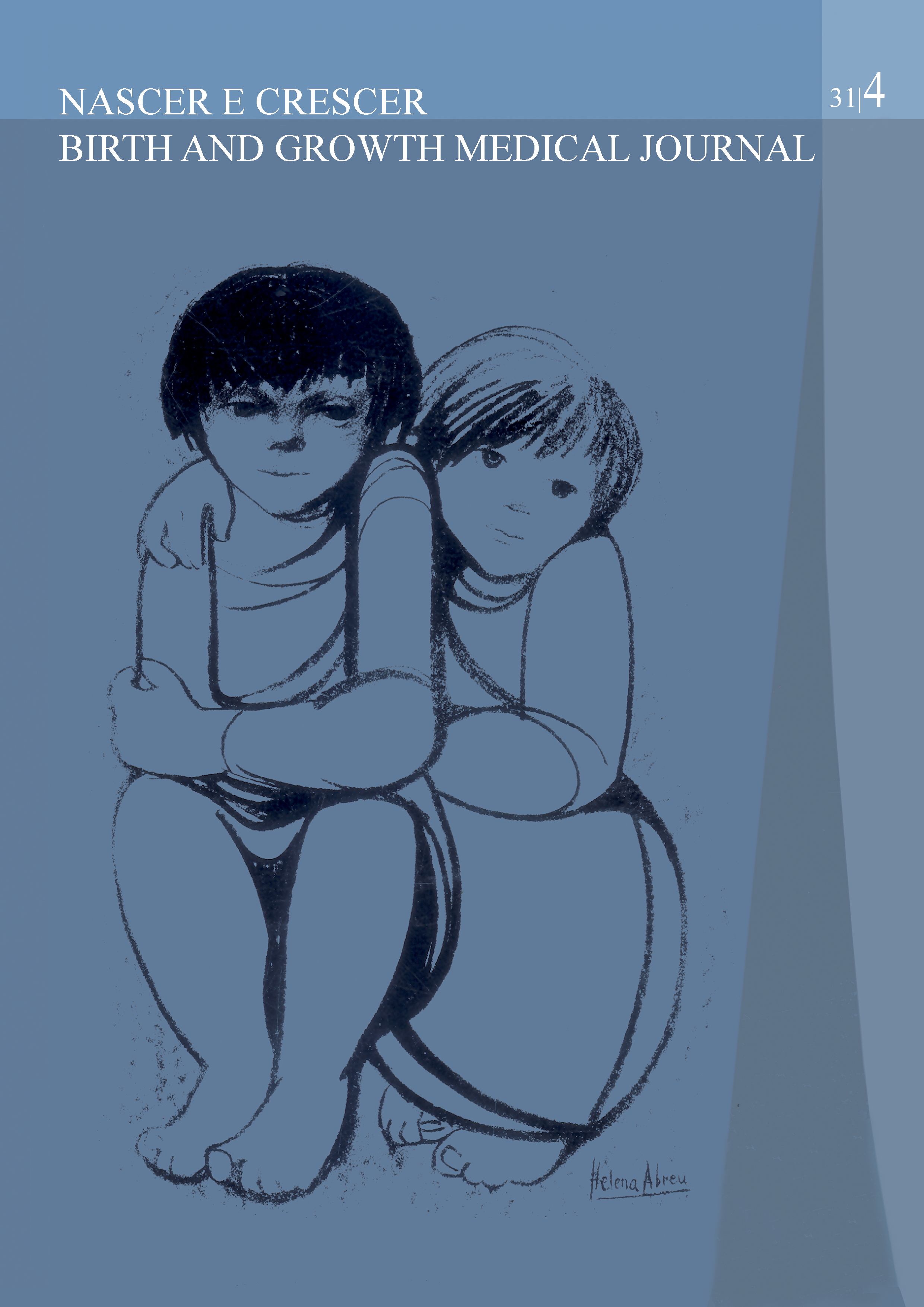Dilated cardiomyopathy in pregnancy: Beyond obstetric outcomes
DOI:
https://doi.org/10.25753/BirthGrowthMJ.v31.i4.25231Keywords:
cardiovascular pregnancy complication, dilated cardiomyopathy, implanted cardioverter-defibrillator, left ventricular dysfunction, pregnancyAbstract
Introduction: Pregnancy is associated with relevant hemodynamic changes that can lead to clinical decompensation in women with previous cardiomyopathy. Given this risk, the literature generally advises against pregnancy in these cases, but this recommendation is controversial.
Case description: Herein is described the case of a woman with dilated cardiomyopathy and left ventricular ejection fraction of 28% who decided to proceed with pregnancy. The baby was born by cesarean section at 32 gestational weeks, with good neonatal outcomes. However, significant cardiac deterioration after birth determined the need for cardiac transplant.
Discussion: The physiological changes that characterize pregnancy can be too demanding for women with previous cardiomyopathy and low left ventricular ejection fraction. In these cases, pregnancy should be monitored by a multidisciplinary team, with cardiac disease control. The timing and mode of delivery is still controversial, given the lack of studies in the area. In addition, the long-term impact of pregnancy and delivery on cardiac function should not be neglected.
Downloads
References
Grewal J, Siu SC, Ross HJ, Mason J, Balint OH, Sermer M, et al. Pregnancy outcomes in women with dilated cardiomyopathy. J Am Coll Cardiol. 2009;55(1):45-52.
Boyle S, Nicolae M, Kostner K, Davies K, Cukovski I, Cunliffe A, Morton A. Dilated Cardiomyopathy in Pregnancy: Outcomes From an Australian Tertiary Centre for Maternal Medicine and Review of the Current Literature. Heart Lung Circ. 2018 Mar 2. pii: S1443-9506(18)30080-5.
WRITING COMMITTEE MEMBERS, Yancy CW, Jessup M, Bozkurt B, Butler J, Casey DE Jr, et al. 2013 ACCF/AHA guideline for the management of heart failure: a report of the American College of Cardiology Foundation/American Heart Association Task Force on practice guidelines. Circulation. 2013 Oct 15;128(16):e240-327. doi: 10.1161/CIR.0b013e31829e8776.
Regitz-Zagrosek V, Roos-Hesselink JW, Bauersachs J, Blomström-Lundqvist C, Cífková R, De Bonis M, et al. 2018 ESC Guidelines for the management of cardiovascular diseases during pregnancy. Eur Heart J. 2018;39(34):3165-3241.
American College of Obstetricians and Gynecologists’ Presidential Task Force on Pregnancy and Heart Disease and Committee on Practice Bulletins—Obstetrics. ACOG Practice Bulletin No. 212: Pregnancy and Heart Disease. Obstet Gynecol. 2019;133(5):e320-e356.
Stergiopoulos K, Shiang E, Bench T. Pregnancy in patients with pre-existing cardiomyopathies. J Am Coll Cardiol. 2011;58(4):337-50.
Lewey J, Haythe J. Cardiomyopathy in pregnancy Semin Perinatol. Semin Perinatol. 2014;38(5):309-17.
Herrey AS. Pregnancy in inherited and acquired cardiomyopathies. Best Pract Res Clin Obstet Gynaecol. 2014;28(4):563-77.
Boulé S, Ovart L, Marquié C, Botcherby E, Klug D, Kouakam C, et al. Pregnancy in women with an implantable cardioverter-defibrillator: is it safe? Europace. 2014;16(11):1587-94.
Downloads
Published
How to Cite
Issue
Section
License
Copyright (c) 2022 Joana Portela Dias, Mariana Coroado, António Braga, Jorge Braga

This work is licensed under a Creative Commons Attribution-NonCommercial 4.0 International License.
Copyright and Authors' Rights
All articles published in Nascer e Crescer - Birth and Growth Medical Journal are Open Access and comply with the requirements of funding agencies or academic institutions. For use by third parties, Nascer e Crescer - Birth and Growth Medical Journal adheres to the terms of the Creative Commons License "Attribution - Non-Commercial Use (CC-BY-NC)".
It is the author's responsibility to obtain permission to reproduce figures, tables, etc. from other publications.
Authors must submit a Conflict of Interest statement and an Authorship Form with the submission of the article. An e-mail will be sent to the corresponding author confirming receipt of the manuscript.
Authors are permitted to make their articles available in repositories at their home institutions, provided that they always indicate where the articles were published and adhere to the terms of the Creative Commons license.


